Resource retrieval
Get the pre-trained net:
NetModel parameters
This model consists of a family of individual nets, each identified by a specific parameter combination. Inspect the available parameters:
Pick a non-default net by specifying the parameters:
Pick a non-default uninitialized net:
Basic usage
Identify the main action in a video:
Obtain the probabilities of the 10 most likely entities predicted by the net:
Obtain the list of names of all available classes:
Network architecture
MobileNet-3D V1 is characterized by depthwise separable convolutions. The full convolutional operator is split into two layers. The first layer is called a depthwise convolution, which performs lightweight filtering by applying a single convolutional filter per input channel. This is realized by having a "ChannelGroups" setting equal to the number of input channels:
The second layer is a 1⨯1⨯1 convolution called a pointwise convolution, which is responsible for building new features through computing linear combinations of the input channels:
Feature extraction
Remove the last layers of the trained net so that the net produces a vector representation of an image:
Get a set of videos:
Visualize the features of a set of videos:
Transfer learning
Use the pre-trained model to build a classifier for telling apart images from two action classes not present in the dataset. Create a test set and a training set:
Remove the last layers from the pre-trained net:
Create a new net composed of the pre-trained net followed by a linear layer and a softmax layer:
Train on the dataset, freezing all the weights except for those in the "Linear" new layer (use TargetDevice -> "GPU" for training on a GPU):
Perfect accuracy is obtained on the test set:
Net information
Inspect the number of parameters of all arrays in the net:
Obtain the total number of parameters:
Obtain the layer type counts:
Display the summary graphic:
Export to ONNX
Export the net to the ONNX format:
Get the size of the ONNX file:
Check some metadata of the ONNX model:
Import the model back into the Wolfram Language. However, the NetEncoder and NetDecoder will be absent because they are not supported by ONNX:
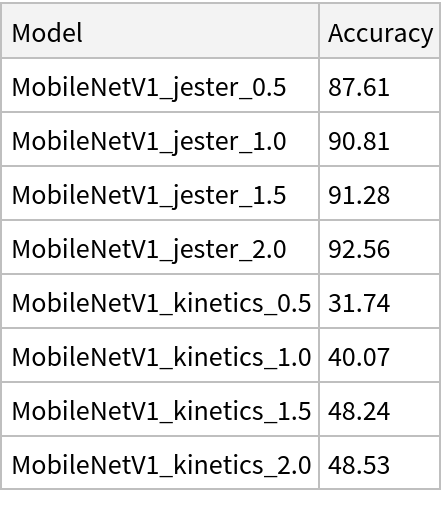
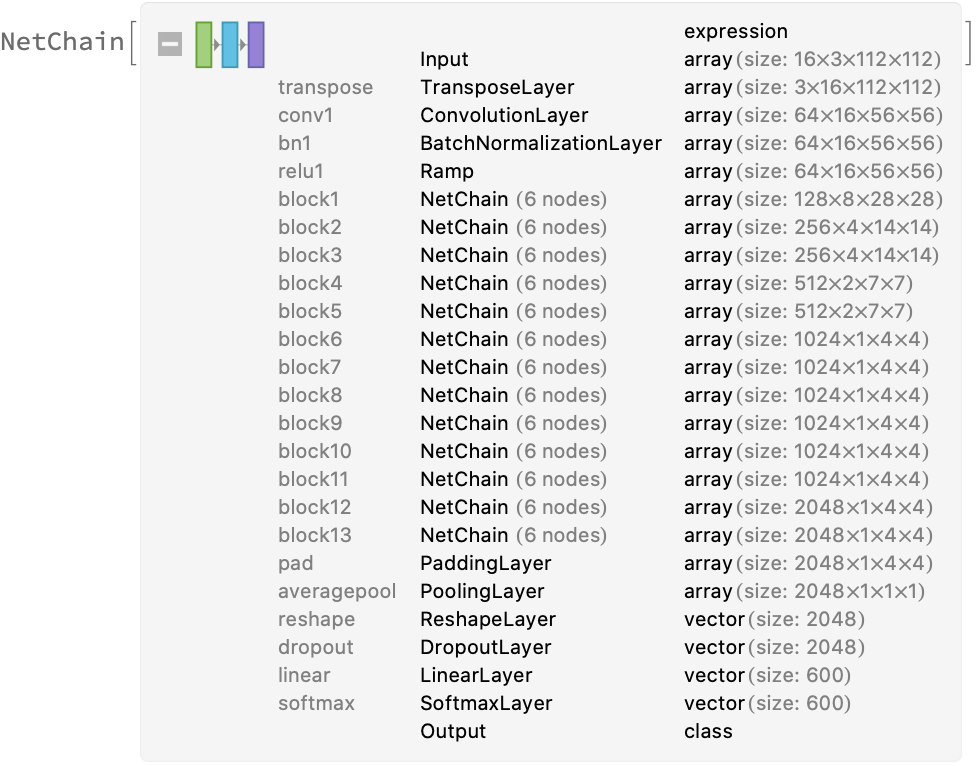



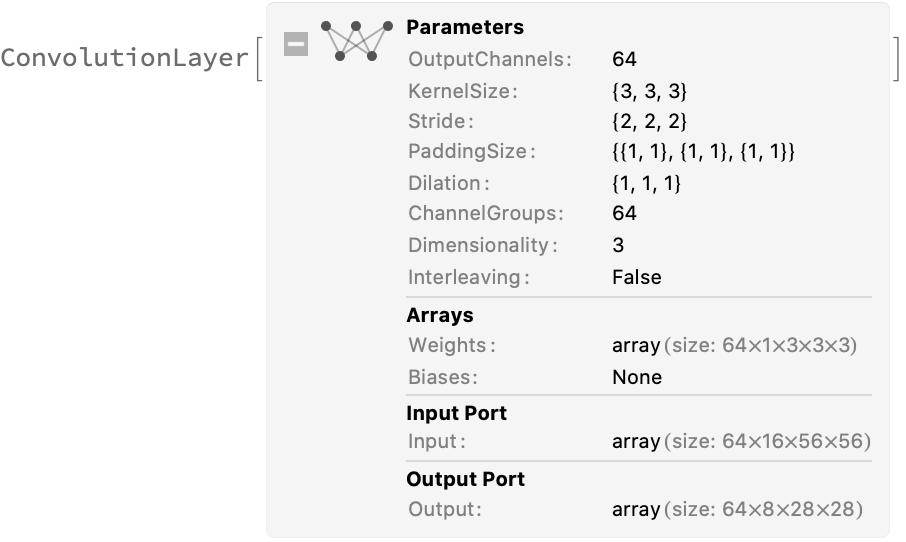
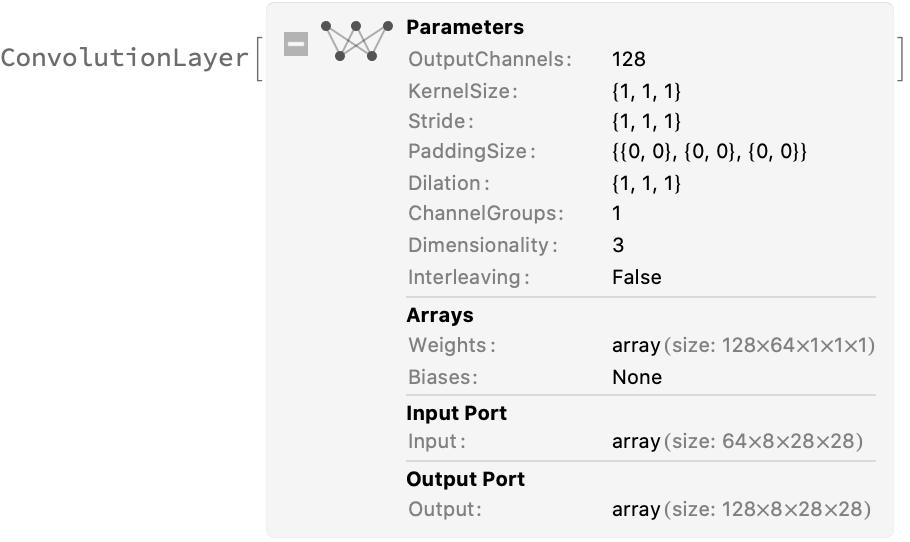
![FeatureSpacePlot[videos, FeatureExtractor -> extractor, LabelingFunction -> (Callout[
Thumbnail@VideoExtractFrames[#1, Quantity[1, "Frames"]]] &), LabelingSize -> 50, ImageSize -> 600]](https://www.wolframcloud.com/obj/resourcesystem/images/e38/e38af8c7-d3c7-4565-999b-c73d447a4039/531f1413961486d9.png)
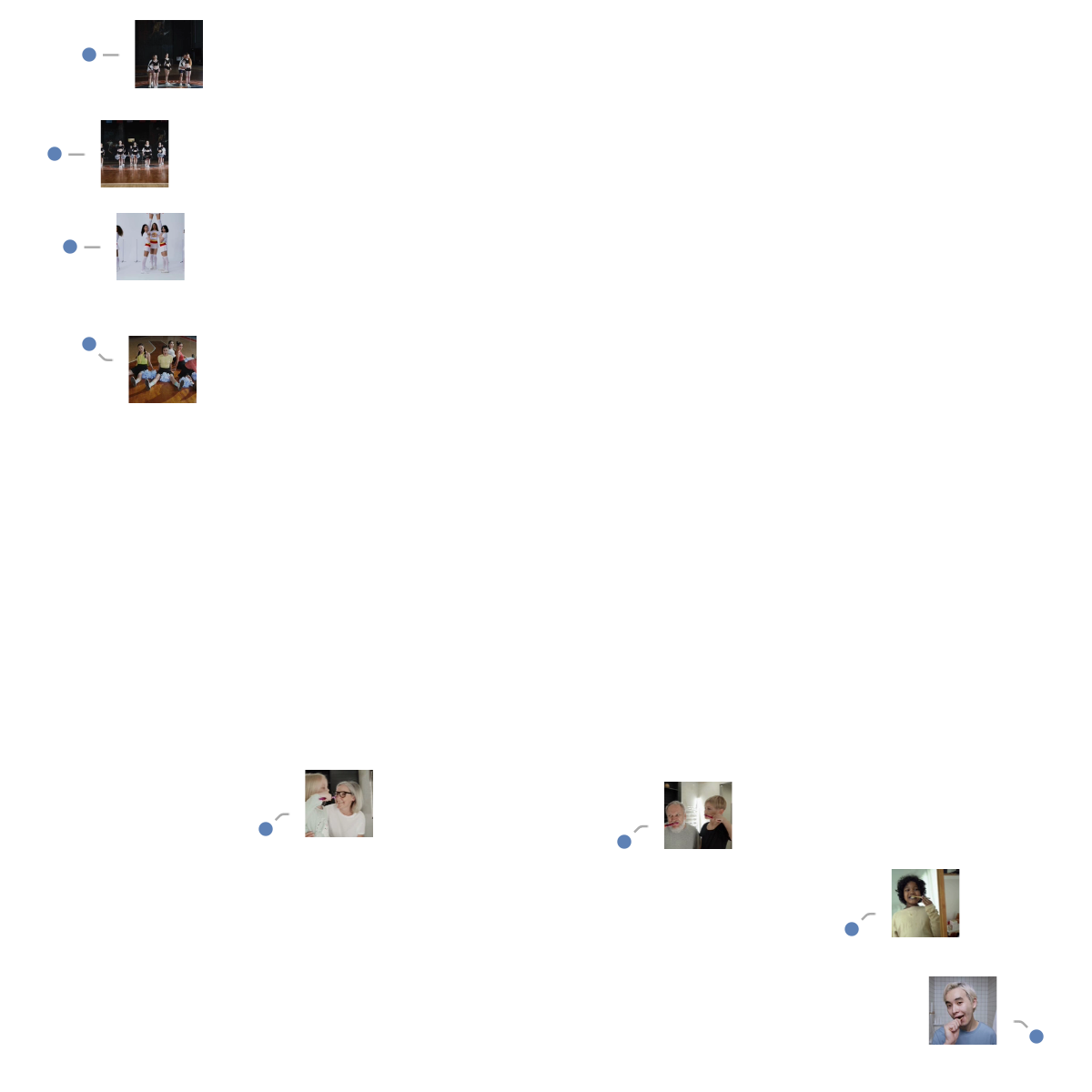
![dataset = Join @@ KeyValueMap[
Thread[
VideoSplit[#1, Most@Table[
Quantity[i, "Frames"], {i, 16, Information[#1, "FrameCount"][[1]], 16}]] -> #2] &,
videos
];](https://www.wolframcloud.com/obj/resourcesystem/images/e38/e38af8c7-d3c7-4565-999b-c73d447a4039/2a7d369c357c1c95.png)
